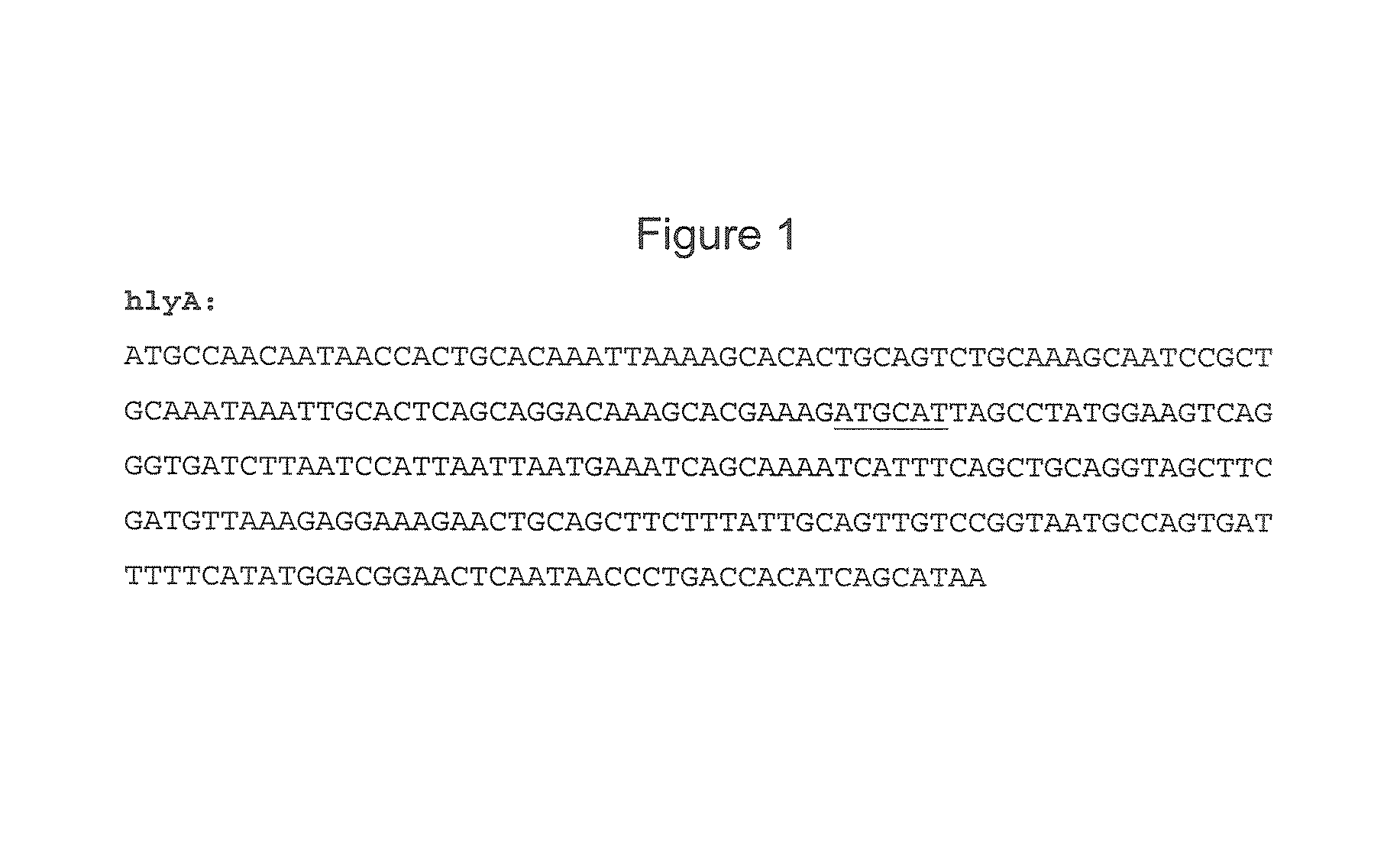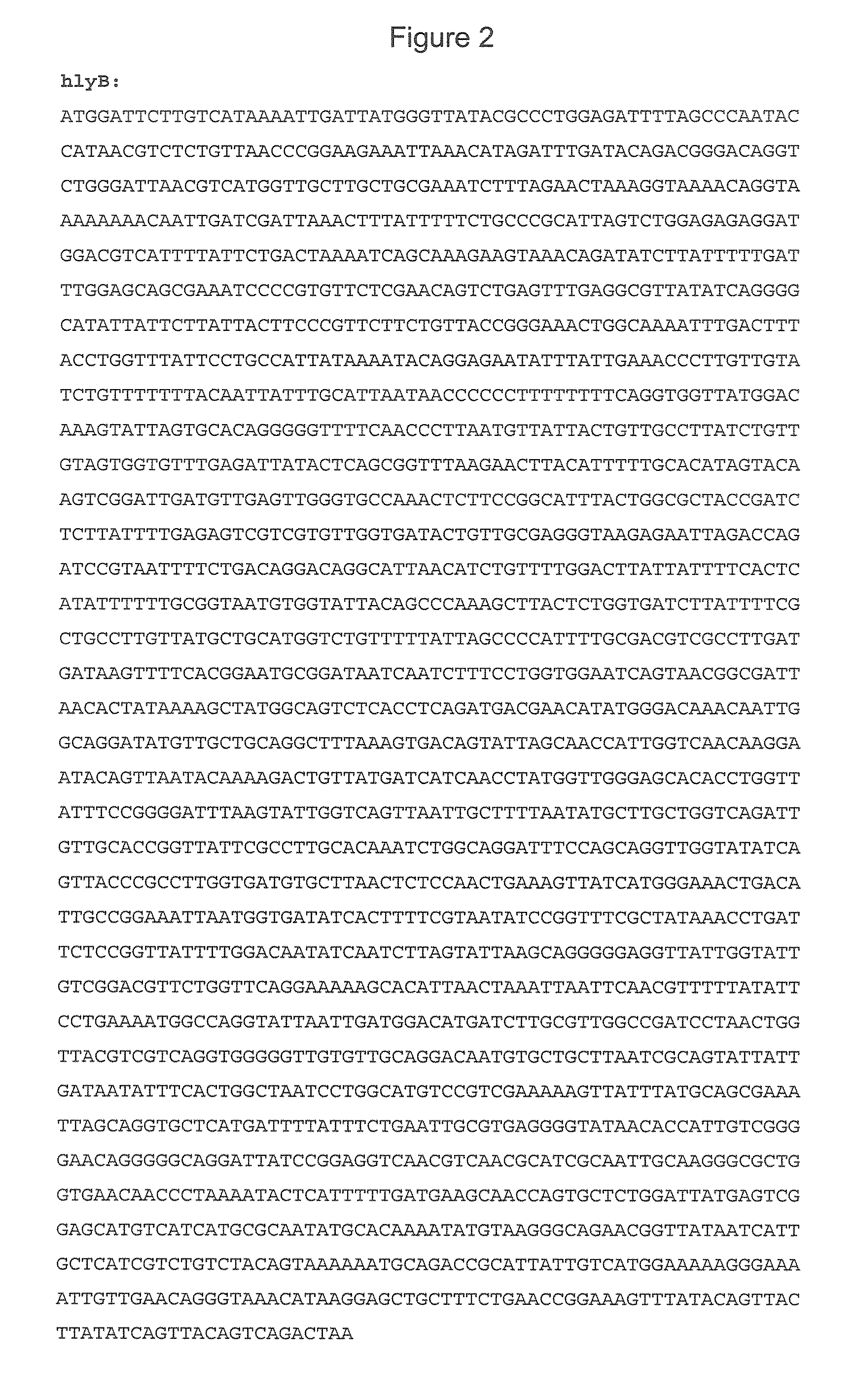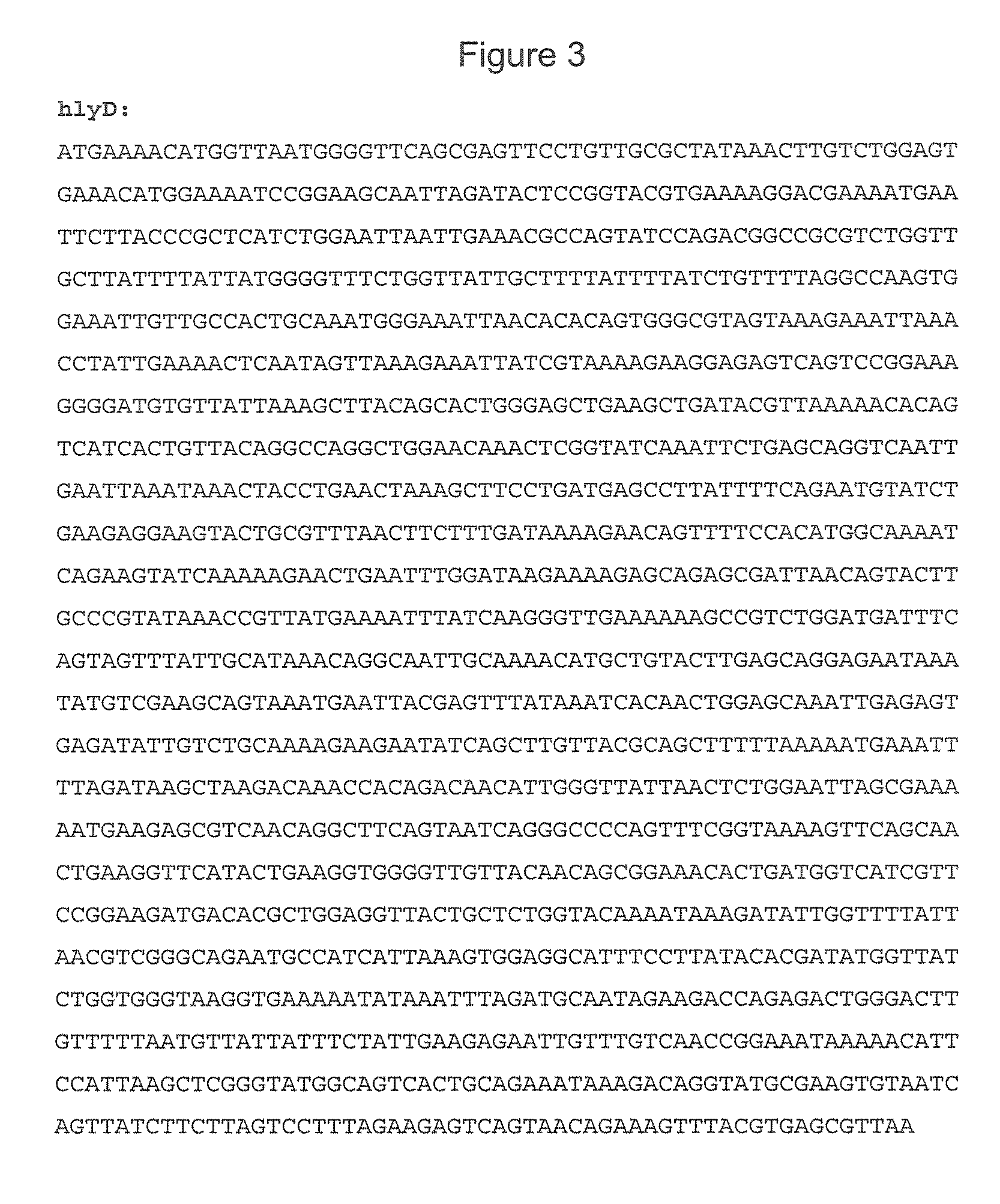Microorganisms as carriers of nucleotide sequences coding for antigens and protein toxins, process of manufacturing and uses thereof
a technology of nucleotide sequences and microorganisms, applied in the field of microorganisms, can solve the problems of high toxicity of native toxins and therefore cannot be established in humans, antigen proteins fused to a detoxified toxin are generally ineffective if applied, and achieve the effect of improving patient complian
- Summary
- Abstract
- Description
- Claims
- Application Information
AI Technical Summary
Benefits of technology
Problems solved by technology
Method used
Image
Examples
example 1
Construction, Expression and Secretion of PSA-CtxB Fusion Proteins in Different Bacterial Carrier Strains
[0205]To prove the feasibility and demonstrate the efficacy of the E. coli type I hemolysin secretion system to secrete fusion proteins of tumor antigens, here prostate specific antigen (PSA), and protein toxin components, here CtxB, as adjuvant, a PSA-CtxB fusion protein was constructed as described herein. Expression and secretion was tested in different gram-negative bacterial strains, which are potentially useful as live vaccine strains in tumor therapy. The molecular biologic cloning is based on the plasmid / expression vector pMOhly1, which has been previously described (Gentschev et al., 2005; Gentschev et al., 1996, WO 03 / 072789).
1A Construction of Kanamycin-Resistant pMOhly1—Expression Vector Derivative
[0206]The replacement of the ampicillin resistance cassette of pMOhly1 was performed as described in (Datsenko and Wanner, 2000).
[0207]In brief, a sense primer P1 (5′-GAGTAT...
example 2
Immune Response and Protection Against Tumor Cell Challenge in Mice Immunized with Salmonella Strains Secreting Fusion Proteins of Tumor Antigens and CtxB or CtxB Alone
[0219]By the following experiments the superior protective efficacy of secreted fusion proteins of tumor antigens and protein toxins was demonstrated in an animal tumor model. For this model, the strain Salmonella typhimurium aroA (SL7207) pMKhly-CtxB-PSA, expressing and secreting the CtxB-PSA fusion protein was compared with other control strains.
2A Immunization Procedures
[0220]DBA / 2 mice were immunized three times with an interval of 3 weeks. For the immunization with bacteria, animals were pre-treated by applying 50 μl 7% NaHCO3 intragastrically to increase the intragastric pH. 5 to 10 minutes after pre-treatment, 5×108 live, Kanamycin-insensitive bacteria were applied in a volume of 100 μl PBS intragastrically. As a control, mice were immunized intramuscularly with naked plasmid DNA encoding PSA (pcDNA-PSA) as des...
example 3
Expression and Secretion of an Oncogen—Toxin Fusion Protein in S. Typhi Ty21a
[0232]Analogous to example 1, another tumor antigen, the kinase domain of the oncogen B-Raf V600E with a 10 as deletion in the kinase domain was used (BRaf V600E kinase domain kinase dead (KD), or briefly BRaf* KD, more briefly BKD). This oncogen and protein toxin components, here CtxB, as adjuvant, a BKD-CtxB fusion protein was constructed as described herein. Expression and secretion was demonstrated in the human vaccine strain S. typhi Ty21a. The molecular cloning is based on the plasmid / expression vector pMOhly1, which has been previously described (Gentschev et al., 2005; Gentschev et al., 1996) and the cloning procedure is analogous to example 1 in this application. The resulting vector is named pMBKDC. The sequence of the fusion protein is given in FIG. 10.
[0233]FIG. 17 depicts the expression and secretion of the fusion protein using the vector pMBKDC electroporated into the strain Salmonella typhi T...
PUM
| Property | Measurement | Unit |
|---|---|---|
| density | aaaaa | aaaaa |
| pH | aaaaa | aaaaa |
| volume | aaaaa | aaaaa |
Abstract
Description
Claims
Application Information
 Login to View More
Login to View More - R&D
- Intellectual Property
- Life Sciences
- Materials
- Tech Scout
- Unparalleled Data Quality
- Higher Quality Content
- 60% Fewer Hallucinations
Browse by: Latest US Patents, China's latest patents, Technical Efficacy Thesaurus, Application Domain, Technology Topic, Popular Technical Reports.
© 2025 PatSnap. All rights reserved.Legal|Privacy policy|Modern Slavery Act Transparency Statement|Sitemap|About US| Contact US: help@patsnap.com



